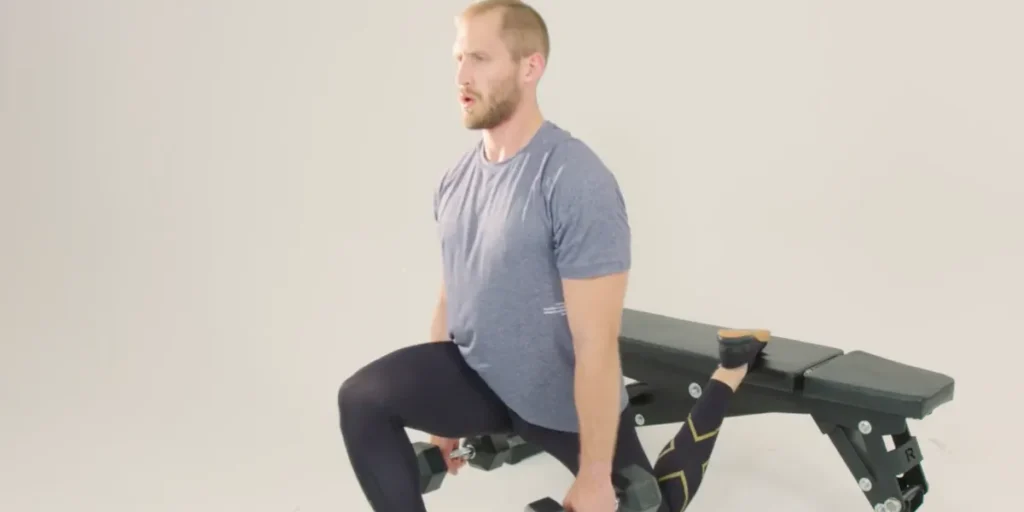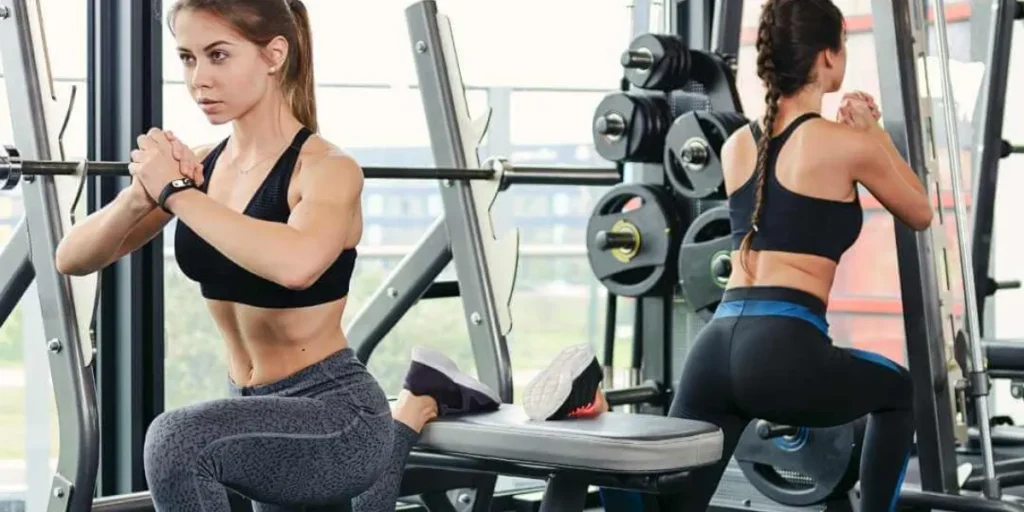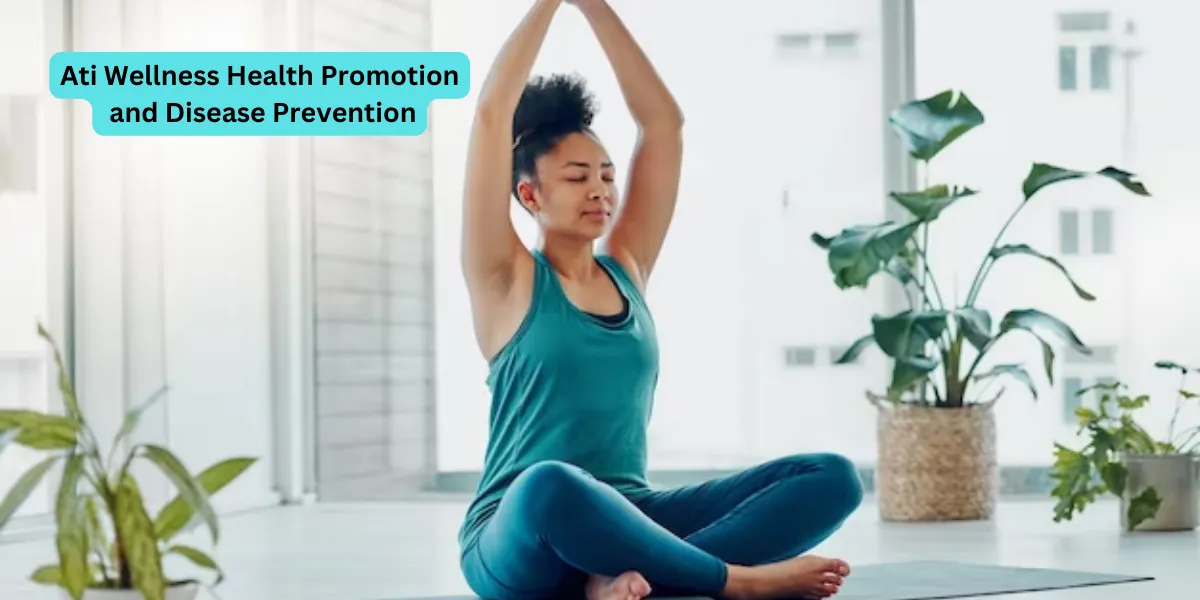The Bulgarian split squat, a unilateral lower-body exercise, reigns supreme for strengthening and sculpting your legs. It targets your quads, glutes, hamstrings, and calves while improving balance and stability. But like any effective exercise, proper form is crucial to maximize benefits and avoid injury. This guide will break down the Bulgarian split squat, from setup to execution, ensuring you perform it flawlessly.
Table of Contents
ToggleBenefits of the Bulgarian Split Squat
- Unilateral Training: Targets each leg independently, addressing imbalances and weaknesses.
- Increased Strength & Power: Works major lower body muscle groups, leading to overall strength gains.
- Improved Balance & Stability: Challenges your core and stabilizer muscles, enhancing balance and coordination.
- Functional Movement: Mimics real-world movements like lunges and stairs, improving everyday athleticism.
- Versatility: This can be performed with bodyweight, dumbbells, or a barbell for progressive overload.
Setting Up for Success: Essential Equipment
The beauty of the Bulgarian split squat lies in its simplicity. Here’s what you’ll need:
- A sturdy bench or chair: Ensure it can hold your weight comfortably. A higher surface will increase the difficulty.
- Comfortable athletic shoes: Provide proper support and stability.
- Optional weights (dumbbells or barbells): Start with bodyweight to master the form before adding weight.
Step-by-Step Guide to the Bulgarian Split Squat
Here’s a detailed breakdown of the Bulgarian split squat, ensuring you perform it with perfect form:
1. Find Your Stance:
- Stand facing away from the bench or chair, roughly two feet apart.
- Engage your core by pulling your belly button towards your spine.
- Maintain a tall posture with shoulders back and chest lifted.
2. Position Your Back Foot:
- Extend one leg behind you and place the top of your foot on the bench.
- Experiment with the distance between your front and back foot. A wider stance offers more stability, while a narrower stance increases difficulty.
- Aim for a position where your front knee forms a 90-degree angle at the bottom of the squat.
3. Achieve Proper Upper Body Positioning:
- Keep your torso upright with a slight forward lean.
- Imagine pushing your chest towards the ground while maintaining a flat back.
- Avoid rounding your shoulders or arching your back excessively.
4. Initiate the Squat:
- Lower yourself down by bending your front knee.
- Focus on pushing your hips back as if sitting in a chair.
- Descend until your front thigh is nearly parallel to the ground and your back knee almost touches the floor.
5. The Powerful Drive-Up:
- Maintain a steady core engagement throughout the movement.
- Push through your front heel to drive yourself back up to the starting position.
- Concentrate on using your front leg to generate the force, minimizing any assistance from your back leg.
6. Complete the Reps and Switch Sides:
- Perform the desired number of repetitions on one leg.
- Carefully step back down from the bench and repeat the entire process with the other leg.
Tips for Flawless Form:
- Maintain a neutral spine: Keep your back flat throughout the movement, avoiding arching or rounding.
- Focus on knee alignment: Your front knee should track directly over your ankle, not caving inwards or outwards.
- Control the descent: Lower yourself with control, don’t let gravity take over.
- Push through your heel: Engage your glutes and hamstrings by driving through your front heel as you rise.
- Keep your core tight: A strong core stabilizes your spine and transfers power efficiently.
- Don’t use momentum: Focus on controlled movements using your leg muscles for power.
- Start light and progress gradually: Master the bodyweight squat before adding weights.
Variations of the Bulgarian Split Squat
As you gain confidence, explore these variations to challenge yourself further:
- Dumbbell Bulgarian Split Squat: Hold a dumbbell in each hand for added weight.
- Barbell Bulgarian Split Squat: Place a barbell across your upper back for an intense challenge.
- Bulgarian Split Squat with Bulgarian Bag: Use a Bulgarian bag, a sand-filled duffel, for an unstable training tool.
- Bulgarian Split Squat with Deficit: Stand on a plate or small block with your front foot to increase the range of motion.
Who Should Avoid the Bulgarian Split Squat?
While a fantastic exercise, the Bulgarian split squat might not be suitable for everyone. Avoid it if you have:
- Recent knee or ankle injuries: Consult a doctor before performing this exercise if you have any pre-existing injuries.
- Balance issues: The single-leg nature of the exercise can be challenging for those with balance problems. Consider starting with a supported split squat variation until balance improves.
- Limited ankle mobility: Deep lunges require good ankle mobility. If your ankles feel restricted, focus on improving ankle flexibility before attempting this exercise.
Safety Considerations
Always prioritize safety when exercising. Here are some key points to remember:
- Warm up properly: Prepare your body with dynamic stretches and light cardio before starting your workout.
- Listen to your body: Stop the exercise if you experience any pain.
- Don’t go too heavy too soon: Gradually increase weight as your strength improves.
- Maintain proper form: Focus on technique over heavy weights.
If you’re unsure about your form or have any limitations, consult a certified personal trainer for guidance.

Conclusion
The Bulgarian split squat is a valuable tool for building lower body strength, stability, and balance. By following these steps, mastering proper form, and progressing safely, you can unlock the full potential of this exercise and sculpt your dream legs. Remember, consistency is key. Make the Bulgarian split squat a regular part of your routine, and witness the results!
Bulgarian Split Squat FAQ
What is a Bulgarian split squat?
The Bulgarian split squat is a single-leg exercise that targets your quads, glutes, hamstrings, and calves. It’s a variation of the lunge exercise but with one leg elevated behind you on a bench or chair.
How do I do a Bulgarian split squat?
Here’s a quick breakdown:
- Stand with a sturdy bench or chair behind you and feet hip-width apart.
- Extend one leg back and place the top of your foot on the bench.
- Engage your core and keep your torso upright with a slight forward lean.
- Lower yourself down by bending your front knee and pushing your hips back.
- Descend until your front thigh is nearly parallel to the ground.
- Push through your front heel to drive yourself back up to the starting position.
- Repeat for the desired reps and then switch legs.
What is the proper form for a Bulgarian split squat?
- Maintain a neutral spine with a flat back.
- Track your front knee directly over your ankle.
- Lower yourself with control and push through your heel to rise.
- Keep your core engaged throughout the movement.
- Don’t use momentum, focus on controlled leg muscle power.
Are Bulgarian split squats good for the glutes?
Absolutely! They are a great exercise for strengthening and sculpting your glutes. By focusing on pushing your hips back during the squat, you target your glutes effectively.
How can I set up for a Bulgarian split squat?
You’ll need a sturdy bench or chair and comfortable athletic shoes. You can start with body weight and progress to dumbbells or a barbell as you get stronger. Experiment with the distance between your front and back foot to find a comfortable and challenging stance.
Is there a Bulgarian split squat tutorial I can watch?
There are many great Bulgarian split squat tutorials available online! Search for “[YouTube] Bulgarian split squat tutorial” to find detailed visual demonstrations.
Can I do Bulgarian split squats with dumbbells?
Yes! Dumbbell Bulgarian split squats are a great way to add weight and increase the challenge. Hold a dumbbell in each hand for added resistance.
What’s the difference between a Bulgarian split squat and a regular split squat?
In a regular split squat, both feet remain on the ground. The Bulgarian split squat elevates one leg behind you, making it a single-leg exercise with a greater focus on balance and core stability.
What’s the right way to do a Bulgarian split squat?
The right way focuses on proper form and technique. Follow the steps mentioned earlier and prioritize controlled movements over heavy weights.
Who should avoid Bulgarian split squats?
Avoid them if you have recent knee or ankle injuries, significant balance issues, or limited ankle mobility. Consult a doctor if you’re unsure if this exercise is suitable for you.
I’m new to exercise. How do I perform a Bulgarian split squat?
Start with bodyweight Bulgarian split squats and focus on mastering proper form before adding weight. You can also perform them with a wall or sturdy object for support until your balance improves.






